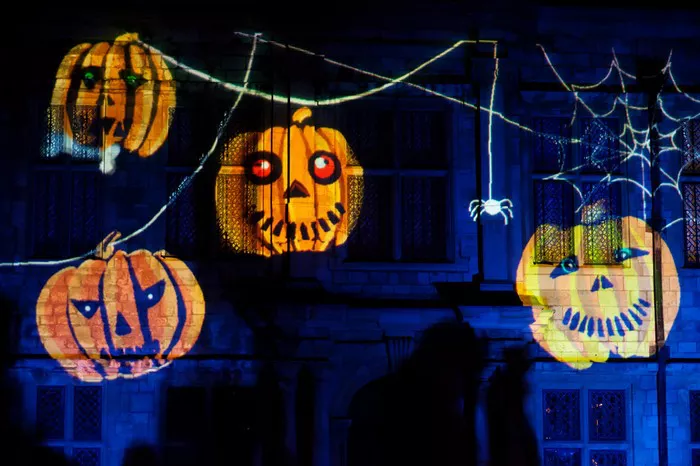Halloween is a time of mirth and mischief, encapsulating a spirit of fun that transcends age and culture. Amidst the spooky decorations and candy corn, Halloween jokes play a pivotal role in the festivities. A “funny Halloween joke of the day” serves not only as a source of laughter but also as a social glue, bringing people together through the power of humor. This article will explore the characteristics, benefits, and cultural significance of Halloween jokes, interspersed with humorous examples to illuminate the discussion.
Understanding Halloween Humor
Halloween humor often revolves around themes of ghosts, witches, vampires, and other spooky elements associated with the holiday. These jokes can range from simple puns and one-liners to more elaborate anecdotes that play on horror tropes in a light-hearted way.
The Role of Puns in Halloween Jokes
Puns are a common linguistic tool in Halloween jokes. They involve a playful use of words that have multiple meanings or similar sounds, creating a semantic surprise that elicits laughter.
Historical Context of Halloween and Its Humor
Halloween has its origins in the ancient Celtic festival of Samhain, which celebrated the end of the harvest season and the beginning of winter. It was believed that on this night, the boundary between the living and the dead blurred, allowing spirits to walk the earth. Over centuries, these solemn beliefs transformed into the more light-hearted Halloween we know today, complete with a strong emphasis on humor and entertainment.
Psychological Benefits of Laughing at Halloween Jokes
Laughing at Halloween jokes—or any jokes—has tangible psychological benefits. Humor is known to reduce stress, improve mood, and even enhance resilience against depression. By incorporating humor into Halloween, a time when fears and scares are playfully exaggerated, these jokes can help individuals process their fears in a safe and enjoyable way.
Social Functions of Halloween Jokes
Sharing a “funny Halloween joke of the day” can serve as an icebreaker at parties or social gatherings, creating a shared atmosphere of joviality and relaxation. For children, Halloween jokes provide a way to engage with the themes of the holiday without delving into genuine fear, making the spooky elements more accessible and enjoyable.
Cultural Variations in Halloween Humor
While Halloween is predominantly celebrated in countries like the United States and Canada, its humor has found a place in various cultures around the world that have embraced the holiday. However, the nature of Halloween jokes can vary significantly across cultures, reflecting differing attitudes towards death, the supernatural, and what is considered “funny” or “appropriate.”
Ethical Considerations in Halloween Jokes
While Halloween jokes are meant to be in good fun, they must be crafted and shared with sensitivity. It’s important to avoid jokes that might perpetuate stereotypes or offend cultural sensibilities. The best Halloween jokes are those that everyone can enjoy without feeling marginalized or disrespected.
Halloween Jokes in Modern Media
Modern media, from TV shows to social media platforms, plays a crucial role in spreading Halloween humor. Many television shows have Halloween special episodes that are rich in festive jokes. On social media, memes and witty posts related to Halloween proliferate during the season, contributing to a virtual celebration of the holiday.
A Collection of Funny Halloween Jokes
1. What happened to the badly behaved witch at school? She was ex-spelled.
2. Why don’t witches wear flat caps? There’s no point in it.
3. What do you get if you cross a sorceress with a billionaire? A very witch person.
4. Why do witches fly on broomsticks? Because vacuum cleaners are too heavy.
5. Why is a witch like a candle? They’re both wicked to the core.
6. Have you seen the twin witches? I can’t tell witch is witch!
7. What did the witch do when her broomstick broke? She witch-hiked home.
8. What do witches put on their bagels? Scream cheese.
9. What do you call two witches in a haunted house? Broommates.
10. What do you call a witch that lives at the beach? A sand-witch.
11. What do you learn at witch school? Spelling.
12. Why couldn’t the little witch read her spellbook? It was written in curse-ive.
13. What does a witch like to read in the newspaper? Her horror scope.
14. What sound do witches’ cereals make? Snap, cackle and pop.
15. Have you heard about the poor witch who became a millionaire? It was a rags-to-witches story.
16. How do witches play loud music? On their broom boxes.
17. What does a little witch use to bake? An easy-bake coven.
18. What do you call a witch’s spotless garage? A broom closet.
19. What do witches’ cats eat for breakfast? Mice crispies.
20. Why didn’t the skeleton dance at the party? He had no body to dance with.
Conclusion
The funny Halloween joke of the day is more than just a quick laugh; it is a reflection of cultural practices, social interactions, and psychological mechanisms. These jokes enhance the celebratory nature of Halloween, bringing people together and providing a light-hearted way to confront and play with the themes of fear and the supernatural.
This exploration of Halloween jokes illustrates not just their entertainment value but also their significance in cultural and social contexts. With thoughtful consideration and a good sense of humor, the funny Halloween joke of the day remains a cherished staple of this eerie yet enjoyable time of year.


